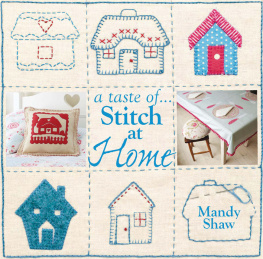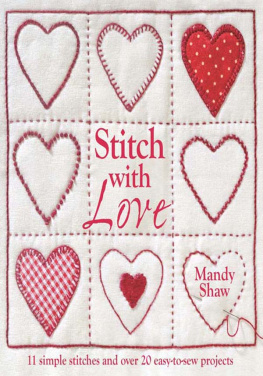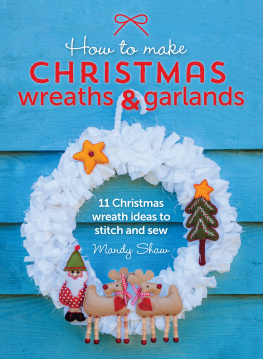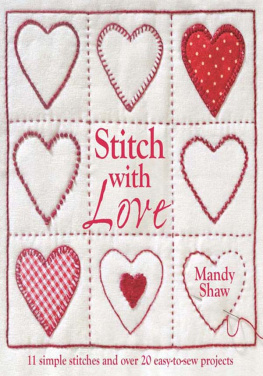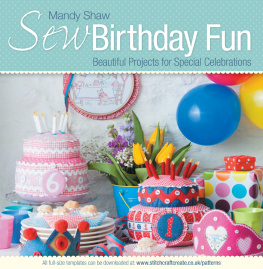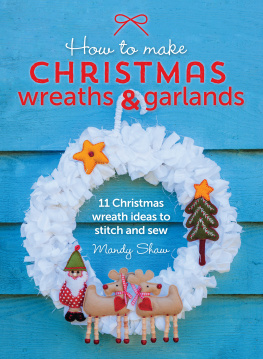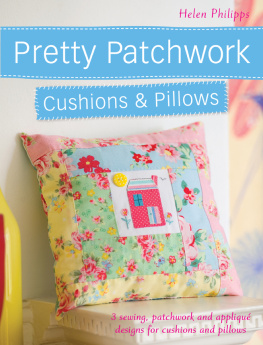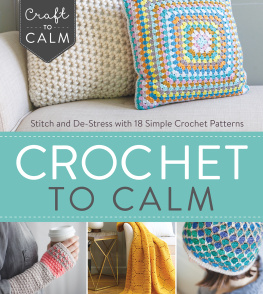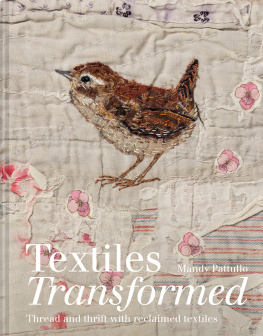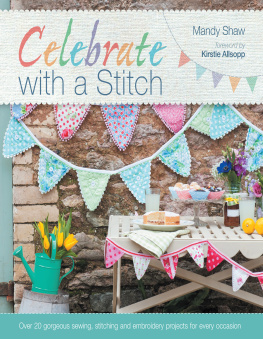Fabrics and Threads
I had such fun finding fabrics to use in this book. I decided on a colour palette of teal, raspberry, brown and cream, and, as dots are in such favour, I opted for those in all different sizes, with some beloved stripes and florals of course.
Linens and cottons
I love to work with 100% cotton and cotton/linen mixes (50/50) to give a clean, crisp textured look to my makes. It is advisable to wash and press your fabrics before you sew in case the colour runs. Fabrics are often treated with a sort of starch dressing to make them easier to sew; after washing and drying your fabrics, you may find that giving them a little spray starch will aid sewing.
Felt
For the best and long-lasting results, use a wool felt or a wool/mix felt at the very least.
Oilcloth
Oilcloth is a waterproof material made by treating one side of a cotton fabric with a synthetic resin. It is not difficult to sew when working from the wrong side of the fabric; when working from the treated side, use a Teflon-coated foot, specially-designed to prevent the machine foot from sticking on the fabric. Alternatively, use your walking foot and help ease the fabric through. Always use a new, sharp, larger-than-normal needle (16/100). Never pin oilcloth as it will leave holes in the fabric, and do not iron it directly as it will melt.
Buttons and braids
I love to to embellish my projects with decorative tapes and pretty buttons, and ric-rac braid is a particular favourite. It can be sewn on by machine or by hand. However, there are a few pitfalls, so do refer to the instructions for working in the Techniques section. Use a fabric spray adhesive, such as 505, to attach wadding to your material. Follow the manufacturers instructions and always spray the wadding not the fabric.
Embroidery threads
As the projects call for different styles of stitching, I have used different types of embroidery thread. Stranded cotton (floss) is good for fine work but can be used to embroider thicker lines too, while coton broder is sometimes too thick for the detailed work required on some projects, so mix and match as you choose.
Coton broder
A favourite of mine, this single strand thread has a matt finish. It is available in different widths in several colours. I prefer No.16 which is quite thick and ideal for blanket stitching, outlining, backstitching, and quilting. Shops rarely stock the whole range but they can be ordered.
Stranded cotton (floss)
This is available in skeins consisting of six strands which can be pulled out individually for use. It is most usual to use two strands in the needle, but for fine detail use just one, and for a chunkier stitching line use three or more.
Sewing threads
When making up your projects, always use a good-quality sewing thread in a colour to match your chosen fabrics.
Maderia Lana
This is a machine sewing thread that looks like wool and sews up a treat to give a hand blanket stitch appearance. You will need to use a larger size 16/100 needle; make sure you use a good-quality one as cheaper needles may have burrs that will shred the thread. For the bobbin thread, use an ordinary thread. Maderia Lana can also be used to hand quilt and embroider, and you will need to use a large-eyed, good-quality needle.
Needles
Invest in a pack of good-quality mixed embroidery needles. These have large eyes and are very sharp, piercing the fabric and allowing the thread to be pulled through with very little friction. How do you know what size needle to use? If after three attempts the needle wont thread, change to one with a larger hole.
Working the Appliqu
Appliqu takes its name from the French verb appliquer, meaning to apply. The technique involves cutting fabric to shape and attaching it to a background fabric to create a surface decoration. The fabric shapes are held in position with fusible webbing and secured and embellished with hand or machine stitching.
WORKING WITH FUSIBLE WEBBING
Fusible webbing is an iron-on fabric adhesive that can be purchased in a roll or in pre-cut pieces and it looks like paper. One side is paper-backed and can be drawn on (so you can trace the motif you want) and the other has a thin membrane of glue that melts when heated by an iron to attach it to fabric. It is easy to use if you follow these simple step-by-step instructions.
1. Trace the motif you want onto the paper (smooth) side of the fusible webbing. Cut roughly around the drawn motif rather than following the drawn line accurately at this stage.
2. Iron the fusible webbing onto the wrong side of the appliqu fabric making sure that the fusible webbing is glue (rough) side down. The glue on the back of the fusible webbing melts when heated so be very careful to iron the paper side or else it will stick to your iron.
Always remember, the smooth side of the iron goes to the smooth side of the webbing.
3. Once the fusible webbing has been attached to the appliqu fabric you can cut out the motif accurately on the drawn line.
4. Carefully peel off the backing paper and position the appliqu motif onto the fabric it is to be applied to. Iron to fix in place.
5. Always cover the edge of the appliqu with a stitch to seal the edges. This can either be done by hand or by machine.
Many templates provided for the project appliqus are drawn in reverse so that they will be the right way round when you come to fuse and sew them.
TYPES OF FUSIBLE WEBBING
There are several different types of fusible webbing on the market. Here is my guide to the brands you are most likely to encounter. Whichever you choose, always take the time to read the manufacturers instructions before using.
Bondaweb A fine brand that sews through really well, but in storage the fusible film has a tendency to peel off the paper, so only buy sufficient for each project. A hot steam iron is used to fix the adhesive.
HeatnBond Lite The adhesive film on this product is a little thicker than Bondaweb, so it stores really well. It fixes with a silk setting and if you use a hot iron by mistake it will render the adhesive useless, so take care.
Lite Steam-a-Seam 2

